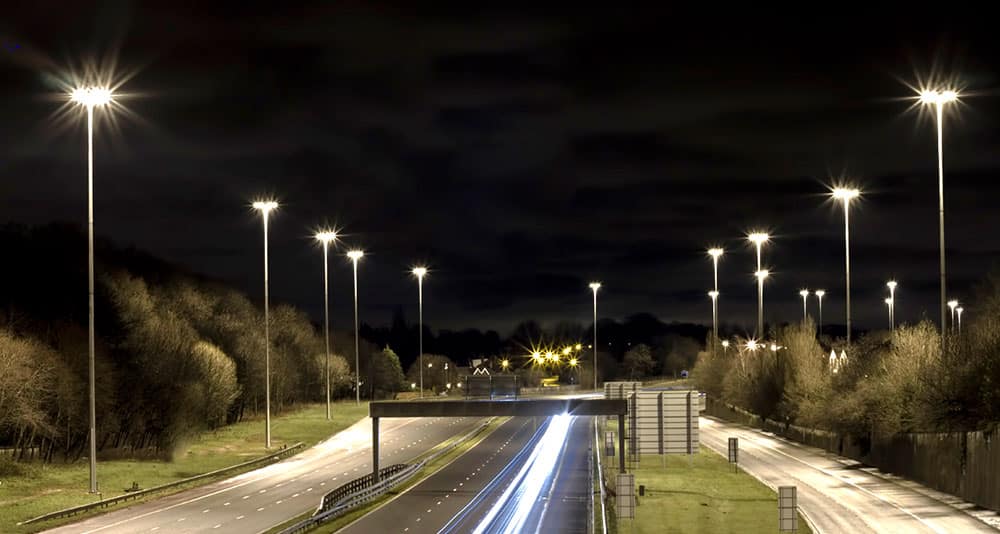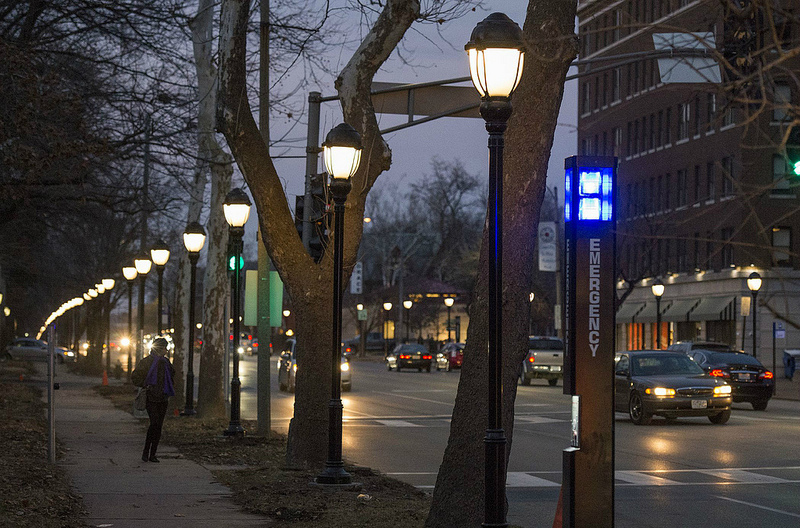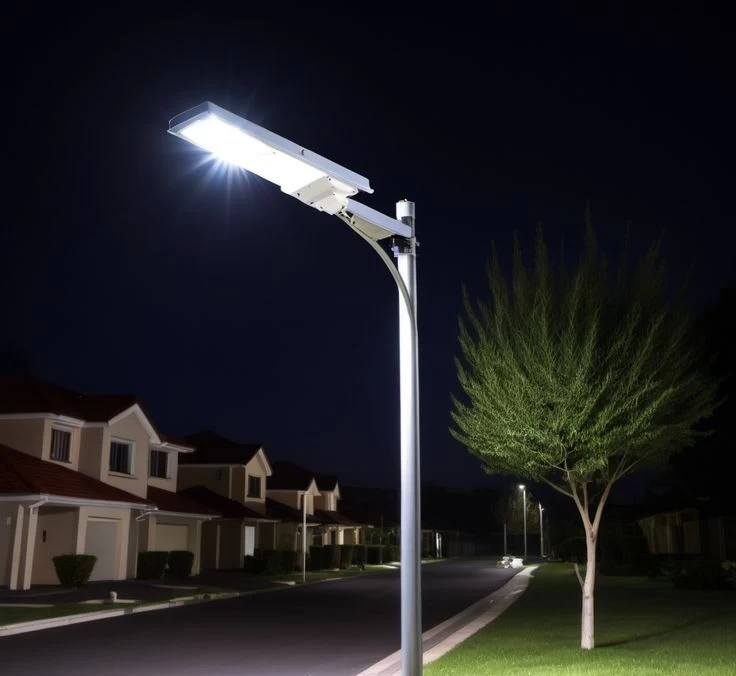Street and pathway lighting is crucial for the safety and comfort of people. Common types of urban lighting include structural lamps, lamp posts, lighting columns, and cortège lights. These types of lighting can help prevent crimes and enhance nighttime safety.
Street and Pathway Lighting Design Standards
For designing street and pathway lighting, as well as outdoor lighting, various standards are usually applied, tailored to local needs and conditions. These standards include:
- Lighting Distribution: Lighting distribution should be uniform and appropriate to ensure all areas of streets and pathways are adequately illuminated.
- Type of Lighting Fixtures: The use of suitable fixtures to ensure proper lighting and effective illumination during nighttime.
- Lighting Control: Lighting control systems should operate continuously and integrate with modern informational systems.
- Energy Consumption: Utilizing low-energy technologies to reduce energy use and improve efficiency.
- Health and Safety: Ensuring that lighting is effectively and safely used for drivers, pedestrians, and others.

Key Points in Street and Highway Lighting Design
Designing lighting for streets and highways requires precision and attention to detail to ensure the safety and comfort of drivers and pedestrians. Using modern technologies and focusing on design details can improve lighting quality and reduce maintenance costs. Here are some key points to consider:
- Proper Light Distribution: The light distribution should be uniform to illuminate all parts of the street evenly, leaving no dark spots. This enhances driver visibility and reduces the risk of accidents.
- Type of Lamps and Projectors: LED lamps are recommended for their low energy consumption, long lifespan, and suitable light quality. These lamps are easy to adjust and control, contributing to effective lighting.
- Height and Spacing of Projectors: The height of projectors should ensure proper dispersion of light on the road. Spacing between projectors must prevent dark areas, providing uniform lighting along the road.
- Glare Control: Lighting must be designed to avoid glare that could impair drivers’ vision. Lamps with adjustable light direction and anti-glare features can be beneficial.
- Light Color: Using white lights with suitable color temperatures can improve driver visibility. Warmer lights might be more appropriate for pedestrian paths and residential areas.
- Smart Technologies: Employing smart systems and sensors can automate lighting adjustments based on traffic and environmental conditions. This optimizes energy consumption.
- Maintenance and Repairs: The design should facilitate easy access to lamps and equipment for repairs and maintenance, which extends the overall lifespan of the lighting systems.
Factors Influencing the Selection of Street Lighting Equipment
The following factors can help in choosing the most suitable equipment for street lighting, enhancing safety and efficiency in the environment:
- Energy Efficiency: Opting for equipment with lower energy consumption and higher efficiency.
- Durability: Selecting equipment with a longer lifespan to reduce maintenance and replacement costs.
- Weather Resistance: Ensuring the equipment is resistant to various weather conditions such as rain, snow, and dust.
- Light Quality: Using lamps that provide uniform and high-quality light to improve driver visibility.
- Adjustability: Equipment should allow adjustments in light intensity and angle to optimize illumination.
- Initial and Maintenance Costs: Considering the expenses for purchase, installation, and maintenance of the equipment.
- Standards Compliance: Ensuring the equipment meets local and international standards.
- Aesthetic Design: The appearance of the equipment should align with the urban environment.

Best Street Lighting Products
Street lighting products can vary widely, but some of the best options include LED lamps with remote control, solar-powered systems, and motion-sensing lights. These products help reduce energy costs and enhance security.
Some of the best street lighting products are:
- LED Streetlights: These lights consume less energy, have a longer lifespan, and provide high-quality illumination.
- Solar-Powered Streetlights: Operate using solar energy and require no wiring or municipal electricity.
- Smart Streetlights: Equipped with advanced sensors and control systems to automatically adjust lighting.
- LED Projectors: Suitable for lighting large areas like parks, squares, and public pathways.
- Energy-Efficient Streetlights: Designed to consume less energy, ideal for streets and pathways.
- Motion-Sensor Streetlights: Turn on and off by detecting movement, saving energy efficiently.

Street and Public Pathway Lighting from an Engineering Perspective
- Optimal Light Design: Engineers should use specialized lighting design software to determine the best lighting patterns for streets and pathways. The design must ensure uniform lighting without dark shadows, enhancing overall safety.
- Lamp Selection: The type of lamps used in street lighting should be chosen based on luminous efficacy, lifespan, and maintenance costs. LEDs, known for their high efficiency and long life, are an excellent choice.
- Height and Distance Between Poles: The height of lighting poles and the distance between them should ensure even light distribution on street surfaces. These parameters should be adjusted based on street width, traffic type, and lighting requirements.
- Light Beam Angle: The light beam angle must be set to avoid direct glare into the eyes of drivers and pedestrians. This reduces glare and enhances safety.
- Smart Lighting Control: Utilizing smart control systems can optimize energy consumption and extend lamp lifespan. These systems can adjust lighting based on traffic and environmental lighting conditions.
- Durability and Environmental Resistance: Lighting equipment must withstand various weather conditions, such as rain, snow, and wind, ensuring longer lifespan and reduced need for frequent repairs.
- Light Color: Selecting the right light color is crucial. Warm white light is often more suitable for residential streets, while cool white light is recommended for highways and high-traffic pathways.
- Safety Standards: Lighting systems should comply with national and international safety standards, ensuring adequate and suitable illumination for all road users.
- Use of Renewable Energy Sources: Whenever feasible, renewable energy sources like solar panels can be used for street lighting to reduce energy costs and protect the environment.
- Maintenance and Repairs: Lighting systems should be designed for easy and cost-effective maintenance and repairs, ensuring their longevity and functionality.

Shamim Andisheh Streetlight Poles
Shamim Andisheh Company is one of the most renowned manufacturers of streetlight poles in Iran. Their streetlight poles feature characteristics such as weather resistance, easy access for maintenance and repairs, and optimized designs for lighting. These poles are typically made from materials such as steel, aluminum, concrete, or plastic, and they offer customizable options for color and height.
The SHA-05 streetlight pole model from Shamim Andisheh is one of the best choices for street lighting. Additionally, this pole can be customized in terms of color and size.


 English
English العربية
العربية

















